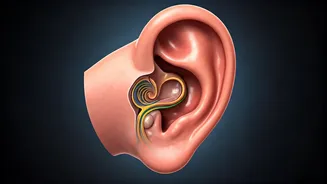The 7-38-55 Rule
The '7-38-55' rule, as popularized by Ankur Warikoo, fundamentally changes how we perceive job interviews. This rule posits that only 7% of interview success
hinges on the words spoken. A significant 38% relies on the tone of voice, while a staggering 55% depends on body language and facial expressions. This implies that even the most articulate candidates can falter if their non-verbal cues are misaligned with their message. Often, interviewers base their first impressions on these non-verbal signals. Therefore, one's ability to demonstrate sincerity and genuine confidence is crucial for leaving a positive impression, regardless of the responses provided. The key takeaway is to be mindful of all aspects of communication, as the non-verbal elements often speak louder than words. Focusing on these non-verbal cues is essential for improving your overall presentation and increasing your likelihood of success.
Decoding Non-Verbal Signals
Non-verbal communication includes a wide range of signals that communicate volumes. Body language, for example, encompasses posture, gestures, and overall physical demeanor. The way one sits, stands, and moves during an interview can significantly influence the interviewer's perception. Maintaining an open posture - uncrossed arms, relaxed shoulders - generally conveys openness and approachability. Conversely, crossed arms might project defensiveness or disinterest. Tone of voice refers to the inflection, pitch, and pace of speech. Speaking in a monotone can be perceived as lacking enthusiasm, whereas a varied and engaging tone captures interest. Similarly, facial expressions, particularly eye contact and smiles, are critical. Consistent, natural eye contact suggests honesty and engagement. A genuine smile creates warmth and approachability. These signals, when synchronized with verbal responses, reinforce the message and build rapport.
Enhancing Body Language
Improving body language involves conscious effort and practice. Start by recording yourself during mock interviews to identify any distracting habits, such as fidgeting or avoiding eye contact. Practice maintaining a relaxed, yet attentive posture, avoiding slouching or leaning back. Experiment with gestures that emphasize your points without being distracting. For example, using hand gestures to explain concepts can make you appear more dynamic and engaged. Mimic confident, positive body language from those you perceive as great speakers. Pay close attention to your facial expressions. Practicing smiling naturally and maintaining appropriate eye contact shows confidence and genuineness. The goal is to build a body language that's congruent with what you are saying to project an image of calm authority. Consistent practice and self-reflection are key to achieving this.
Mastering Vocal Tone
The tone of voice greatly impacts how your message is received. Varying your vocal pitch can prevent monotone delivery, and making sure the tone conveys enthusiasm can keep the interviewer captivated. Avoid speaking too quickly, as this can make your responses seem rushed or nervous. Speak clearly and project your voice confidently. A slight pause before answering a question can show that you are taking time to think, which can enhance the perception of thoughtfulness. Record yourself to analyze your tone, and note areas where you could improve. Try adjusting your pace, adding emphasis to key words, and modulating your pitch to keep the interview lively and engaging. Practicing these techniques can increase your chances of sounding polished. Remember that a clear, confident voice is crucial for conveying professionalism and building trust with the interviewer.
Cultivating Genuine Confidence
Building true confidence requires preparation, self-awareness, and self-care. Being well-prepared for the interview can significantly reduce anxiety. Research the company, review common interview questions, and prepare thoughtful responses. Practicing in front of a mirror or with friends can help refine your presentation. Acknowledge and manage pre-interview stress, using deep breathing or other relaxation techniques. Identify your strengths and rehearse sharing them confidently. Remember to maintain a positive self-talk, and focus on your past achievements. Embrace the idea that you are worthy of the position, and let your enthusiasm for the role shine through. By focusing on preparation, practicing, and maintaining a positive mindset, you can naturally exude confidence. Also, remember that confidence is not about faking it, but about believing in your skills and qualifications.
Putting It All Together
Integrating these elements effectively results in a strong impression. Before the interview, focus on preparation. During the interview, pay close attention to your non-verbal cues. Maintain open body language, and speak in a clear and engaging tone. Make consistent eye contact, and respond genuinely to the questions. Consciously incorporate techniques to manage any nervousness. Listen actively to the interviewer's questions and pause momentarily before responding to reflect. After the interview, reflect on your performance, noting areas for improvement. By merging your words with a positive tone, and a confident body language, you can significantly enhance your chances of leaving a lasting and positive impression. Consistent effort and awareness of these non-verbal elements will improve your performance in the interviews.










